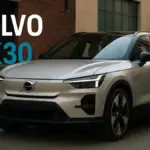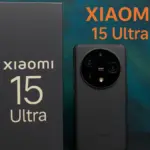Tesla continues its relentless pursuit of innovation in 2025, reinforcing its status as a trailblazer in the electric vehicle (EV) industry. With a powerful lineup of refreshed models, cutting-edge AI integration, and bold strides in sustainable energy solutions, Tesla is not just leading the EV revolution—it’s rewriting the rulebook on what transportation means in a carbon-conscious world.
A Refined Model Lineup for 2025
The 2025 Tesla range features upgrades across the board, including the Model S, Model 3, Model X, and Model Y. Each vehicle now benefits from enhancements in battery technology, improved range, and more intuitive autonomous driving features. One of the standout innovations this year is the next-gen 4680 battery cell, which boosts range while reducing production costs—making EVs more accessible to the masses.
The long-awaited Cybertruck, now in full production, is finally rolling out to consumers with a futuristic design, bulletproof exoskeleton, and class-leading towing capabilities. Additionally, Tesla has introduced a refreshed Roadster, which boasts jaw-dropping acceleration (0–60 mph in under 1.9 seconds) and over 600 miles of range—cementing its place as a supercar disruptor.
Full Self-Driving (FSD) Gets Smarter
Tesla’s Full Self-Driving (FSD) Beta V12 received a massive overhaul in 2025, incorporating end-to-end neural networks and next-generation vision processing. The system now performs more human-like decisions, with better handling of complex urban scenarios, including roundabouts, pedestrian-heavy areas, and construction zones.
With regulatory approval in select markets like California, parts of Europe, and China, Tesla’s FSD is closer than ever to achieving Level 4 autonomy. This makes Tesla not only a carmaker but also a leader in AI-driven mobility services.
Tesla AI and Robotaxis
2025 also marks a significant leap forward in Tesla’s Autonomous Robotaxi Network. Cities like Austin and Berlin are now testing fleets of fully autonomous Model Ys operating as ride-hailing vehicles without human intervention. This service promises cheaper, safer, and greener transport options for urban areas, challenging traditional rideshare giants like Uber and Lyft.
Underpinning these capabilities is Tesla Dojo, the company’s AI supercomputer, which has accelerated the training of neural networks and shortened the development cycle for autonomous features.
Energy and Infrastructure Expansion
Beyond vehicles, Tesla’s energy division saw significant growth in 2025. Tesla Solar Roofs and Powerwalls are now more affordable and efficient, helping homes achieve true energy independence. The Megapack storage systems, designed for large-scale energy projects, have been adopted by several utilities globally, aiding the transition to renewable grids.
Tesla has also expanded its Supercharger V4 network, introducing 350kW ultra-fast charging stations that reduce charge time to under 15 minutes. The new chargers are fully compatible with non-Tesla EVs, encouraging wider EV adoption and reinforcing Tesla’s commitment to global electrification.
Global Manufacturing and Scalability
Tesla’s Gigafactories in Texas, Berlin, Shanghai, and the newly opened plant in India are scaling at an unprecedented pace. These factories are not just vehicle production hubs—they are vertically integrated ecosystems encompassing battery production, AI development, and energy storage units. The Indian Gigafactory is especially notable for producing an affordable compact EV, tailored to emerging markets with a sub-$25,000 price tag.
Sustainability at the Core
What sets Tesla apart in 2025 is its holistic approach to sustainability. From mining its own lithium in environmentally conscious ways to using AI to optimize supply chains, Tesla is setting industry benchmarks. Its net-zero manufacturing goals are on track, and its use of recycled materials in vehicle interiors showcases its dedication to reducing its ecological footprint.
The Road Ahead
Tesla’s ambitions go far beyond automobiles. CEO Elon Musk reaffirmed plans for Tesla Bot (Optimus), designed to perform repetitive human tasks and eventually play a role in elder care, factory work, and hazardous environments. The company is also eyeing space-Earth transportation interfaces via collaborations with SpaceX, envisioning a seamless future of multi-planetary mobility.
In 2025, Tesla is not just making cars—it’s creating a full-stack ecosystem of clean energy, artificial intelligence, and transportation technology. By challenging conventional boundaries and focusing on scalability, affordability, and innovation, Tesla continues to accelerate the world’s transition to sustainable energy.







